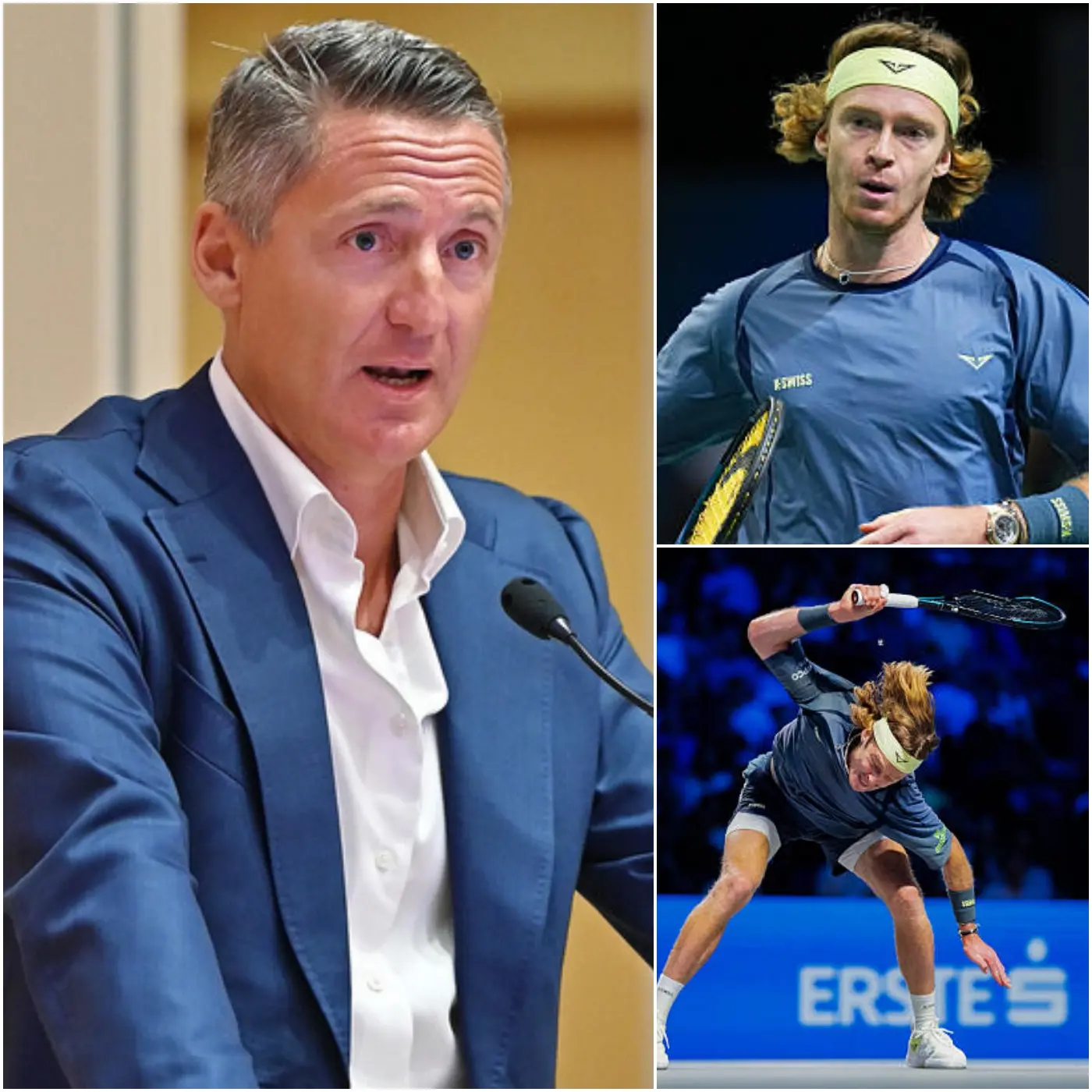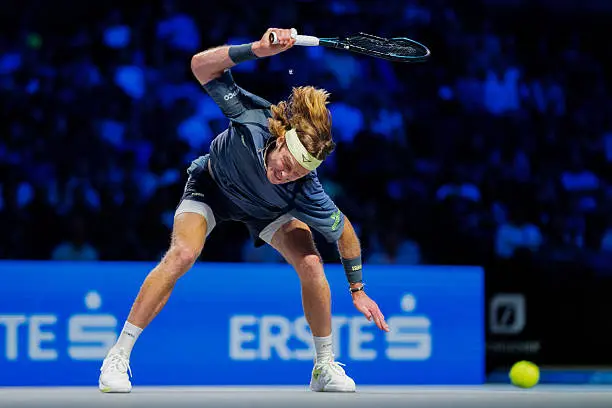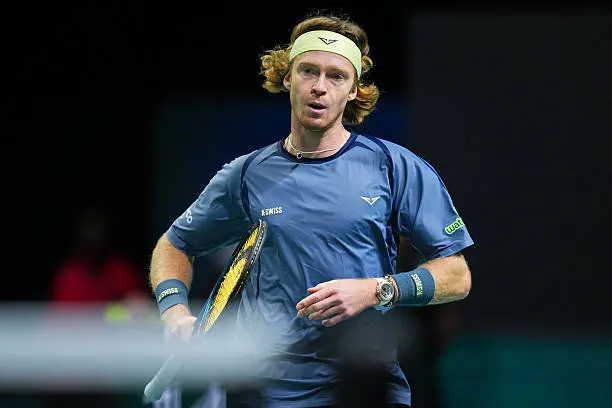Just hours after his emotional outburst on court, the tennis world is reeling. The ATP has officially launched a full investigation into Andrey Rublev, including mandatory doping tests and an unprecedented mental health evaluation following his meltdown against Cameron Norrie.

Witnesses described the moment as chaotic and deeply troubling. Rublev, usually known for his fierce but controlled temperament, smashed his racket, shouted repeatedly at officials, and appeared disoriented during the final moments of the second set. Security and medical staff rushed to his side as the crowd watched in stunned silence.
According to insiders, ATP officials decided to intervene immediately after the incident. The governing body reportedly viewed Rublev’s behavior as “a potential red flag” and ordered both medical and psychological assessments to ensure his well-being and the sport’s integrity.

Early reports suggest that the doping test returned negative results, ruling out substance influence. However, the focus has now shifted toward his mental state. Several close sources revealed that Rublev has been under immense personal and professional pressure since the start of the season.
Teammates and rivals alike have commented on his visible stress. “He hasn’t been himself lately,” one player shared anonymously. “You can see it in his eyes, in how he talks, even how he trains. Something is clearly weighing on him.” The outburst, they said, didn’t come out of nowhere.
Psychologists connected to the ATP emphasized that such behavior can stem from burnout, emotional fatigue, or even underlying depression — all increasingly common among elite athletes. They praised the ATP for prioritizing player welfare instead of punishment in this particular case.
Meanwhile, social media exploded. Fans from around the world expressed concern, support, and disbelief in equal measure. Some defended Rublev passionately, calling him “human and vulnerable.” Others criticized the ATP for waiting too long before stepping in, demanding more proactive mental health support.

Rublev himself has remained silent since the incident. His team released a brief statement asking for privacy, saying only that “Andrey is undergoing evaluations and taking time to reflect.” That silence has only intensified public curiosity about what truly happened behind the scenes.
Analysts pointed out that the Russian star has faced a brutal schedule, with back-to-back tournaments and constant media scrutiny. Combined with expectations from fans and sponsors, the psychological toll may have reached a breaking point. “Sometimes,” one commentator noted, “even champions forget they’re human until something cracks.”
In recent years, the ATP and WTA have been forced to confront the growing mental health crisis in professional tennis. From Naomi Osaka’s withdrawal from major events to Nick Kyrgios’ public struggles, the topic has moved from taboo to central stage. Rublev’s case may become a new turning point.

Several retired players have spoken out in solidarity. One former Grand Slam champion said, “When I saw his face, I saw a cry for help. This sport pushes you to your limits, physically and mentally. We can’t ignore that anymore.” His words resonated with many who see Rublev not as a villain, but as a warning sign.
As for the official results of the ATP’s evaluation, they remain confidential for now. However, multiple sources indicate that the organization may recommend a short competitive break for Rublev, along with professional counseling and supervised recovery before returning to competition.
Whether this marks the beginning of a comeback or a longer hiatus is unclear. What is certain is that Andrey Rublev’s story has sparked an essential conversation about mental resilience in high-performance sports — a reminder that even the strongest athletes carry invisible battles.
For now, the world waits. The image of Rublev, sitting on the bench with his head in his hands, remains etched in memory — not as a symbol of failure, but as a moment of vulnerability in a sport that demands perfection. And perhaps, that moment will change tennis forever.






